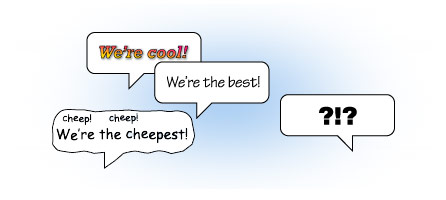Two decades ago, bestselling marketing gurus Jack Trout and Al Ries wrote a book called “Bottom-Up Marketing.”[1] In it, they detailed the case of a small pickup manufacturer, Isuzu Motors, whose advertising spokesperson at the time was a character named Joe Isuzu,[2] a compulsive liar.
Television commercials and print detailed his outlandish claims regarding things he could do with his Isuzu pickup which always ended with a clever, though obviously transparent, means by which he accomplished the feat. For example: Joe claimed to have driven his Isuzu pickup to the top of Mt. Everest. How’d he do it? “Snow tires.”
The ads were clever, memorable, and were regularly discussed by nearly everyone with a TV. Joe Isuzu became synonymous with “big liar.” The campaign won a raft of advertising industry awards. As a result the agency who created the campaign, Della Femina McNamee Inc., prospered, as did actor David Leisure, who played the Joe character.
Isuzu didn’t fare as well. Their pickup truck sales were dismal.
By now, you’ve figured where this is headed. Cleverness and powerful graphics get our attention. They serve to overcome outside distractions. But without a clear marketing message as to how or why the product helps the customer improve their position, it’s nothing more than entertainment.
Let’s hear your comments.
——–
[1] Bottom-Up Marketing by Al Ries and Jack Trout, p. 157
[2] Wikipedia entry for Joe Isuzu
Filed under: marketing | Leave a comment »


